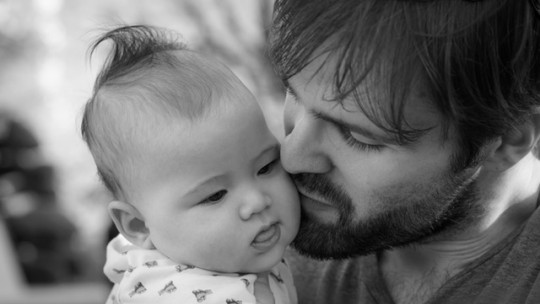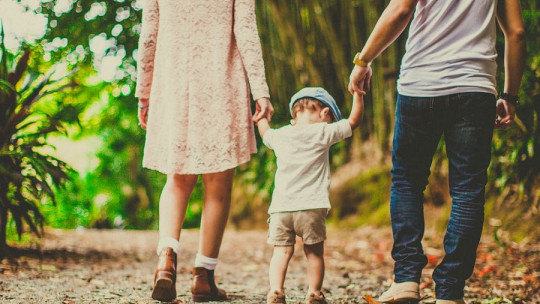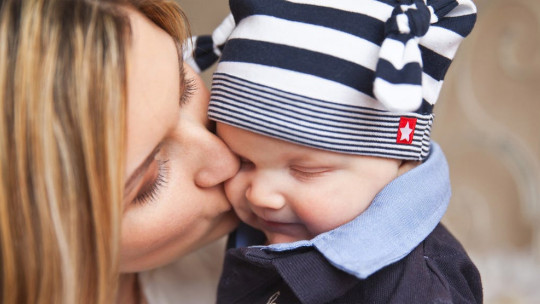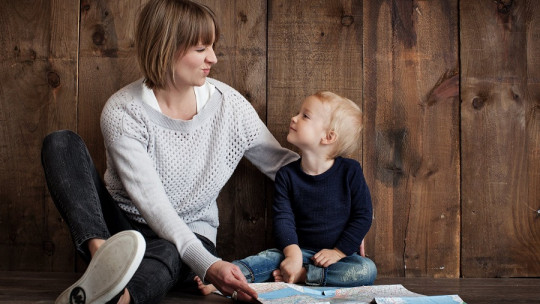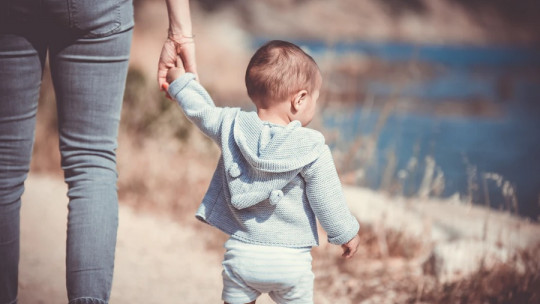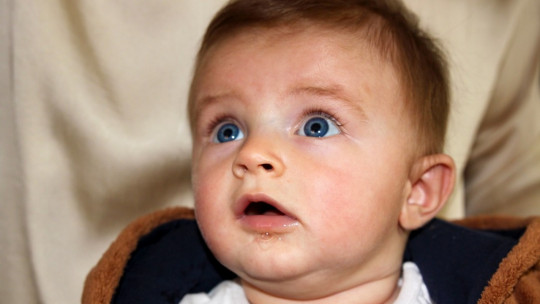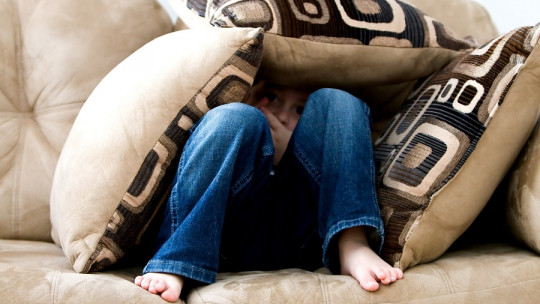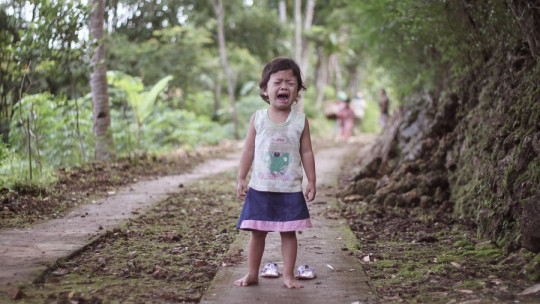
During childhood, all boys and girls are vulnerable and depend directly on the closest adults, who usually tend to be their parents.
The warmth of a mother’s hug, the caresses of a father, the words of support for having made a nice drawing and other actions that may seem like trifles are essential for the correct emotional development of the child.
However, unfortunately, many children are victims of abuse, which will mark them for life and determine the relationship they will have with their caregivers. This is common in those who show disorganized attachment a type of bond in which aggressiveness and insecurity are very present and which we are going to see in more detail below.
Disorganized attachment: what is it?
Disorganized attachment is one of the four types of attachment, characterized by having a threatening relationship between caregiver and baby, in which parents or caregivers behave in unpredictable ways Within Bowlby’s attachment theory, attachment is understood as the bond established between the child and his or her caregiver. This link becomes very important, since it determines how psychologically adjusted the child will be when becoming an adult in the future.
In the case of disorganized attachment, the baby has been raised in an environment that is very hostile to him, where there is always aggression in the form of both physical and psychological abuse and, sometimes, there can also be sexual abuse. These types of experiences, already very bad in themselves, are experienced in an especially hard way during childhood, producing a very strong internal imbalance in the boy or girl.
The infant, who is a victim of his or her own parents or caregivers, is also dependent on them He cannot escape from the situation because, in addition to not having the means to do so, he could not afford it either. The child, by nature, knows that he cannot live without his caregiver, so he tries to get as close to him as possible, even though she knows that he is going to receive harm.
Although it is possible that when faced with attacks he starts to scream, it is possible that this only brings him more abuse, causing him to reach the point where he evades reality. He dissociates and, in this way, enduring the harm coming from those who should protect him from any threat, the child manages to survive, given that, although harmful, he receives the attention of his parents.
Characteristics of children with this type of attachment
There are several characteristics of children who have developed disorganized attachment. They manifest several problems on an emotional level, and it is also possible to see some psychomotor and cognitive deficit.
1. Erratic behavior with caregivers
Children who constantly suffer abuse from their parents live a constant dilemma On the one hand, they need to receive care and attention from their parents, but on the other hand, they tend to want to distance themselves from them.
This causes the child to behave in seemingly contradictory ways. For example, at one point he may start crying inconsolably, look for her parents, and then attack them.
2. Fear of caregivers
Children who have been mistreated by their own parents or close adults end up developing an obvious fear of them. Having experienced an abusive situation of any kind can contribute to symptoms of post-traumatic stress disorder
However, it should be said that there will not always be disorganized attachment due to an abusive relationship. Sometimes, living with parents with an unstable educational style in which the infant is not taken into account is enough for this type of attachment to occur.
Whatever contributes to this, the final consequence is that the child ends up associating the image of his parents with that of sadness, discomfort and self-blame.
3. Fear of exploring and phobias
Children who have developed this type of attachment do not dare to discover the world in which they live, for fear of encountering more people who will hurt them or making mistakes that will later be punished by his own parents.
This fear of exploring, in addition to being detrimental to their cognitive development because it deprives them of new stimuli, can go further, becoming multiple types of phobias.
4. Dissociation
Especially when they are experiencing an episode of abuse, children with disorganized attachment They end up dissociating, that is, they lose contact with reality
This happens because they cannot escape from the situation, but they cannot change it either, and since they depend on their parents, their mind carries out this dissociation as a defense mechanism.
5. Hypervigilance
They are constantly on alert to avoid, to the extent they can, a possible aggression or aversive situation.
6. Cognitive problems
These little ones They express themselves verbally poorly, in a disorganized and redundant manner when talking. In addition, they have deficits in attention, memory and concentration and, related to post-traumatic stress, there are interferences in their minds in the form of flashbacks of the episodes of abuse.
7. Low self-esteem
Usually, these types of children They associate abuse with the idea that they are bad and deserve it that their parents are really punishing them for having done things wrong and that they have not learned their lesson.
Their feeling of guilt is very great, and related to the fear of exploring, they do not dare to try new experiences for fear of making a mistake and suffering another situation of abuse as a consequence.
Consequences upon reaching adulthood
Upon reaching adulthood, those who lived a disorganized attachment relationship with their caregivers manifest a series of characteristics that, in a certain way, reflect the type of bond they experienced in their childhood.
They are adults who have serious difficulties when it comes to identifying the emotions and thoughts of others But not only do they feel confused when it comes to understanding what others think; They themselves are not able to understand what they think, in addition to having reduced linguistic capacity and difficulties when understanding certain abstract ideas.
As victims of abuse that they were, they have a deep-rooted belief that they were bad people and that they continue to be bad people, that they deserved those acts of physical and verbal abuse and that they tend to self-harm. Furthermore, since in their childhood ‘love’ was manifested in the form of violence and aggressiveness, they assume that it is something normal in all human relationships and that it is legitimate to behave this way towards those they supposedly love, anticipating that they will be attacked later. or early. This makes it difficult for them to establish strong intimate relationships.
When experiencing this type of situation, it is common to see how the child is not respected by his or her caregivers, indicating that their opinion or wishes should not be heard. This manifests itself in adult life in a way that The person is not capable of feeling respect for others, nor understanding their limits, obligations or rights as members of a society, making them likely to commit more crimes.
They tend to develop certain disorders, especially related to depression and anxiety. It is also possible to find people with this type of attachment addicted to drugs, since they looked for a way to cope with the constant bad memories about their childhood.
What is the treatment like?
The therapy aimed at treating those people whose childhood was marked by disorganized attachment focuses, fundamentally, on making them see that They are not necessarily going to receive harm in intimate relationships Treatment focuses on making the person more confident when interacting with other people, whether they are friends, their partner and family, whether or not they are involved in the abuse.
This increase in trust towards others allows us to recover part of the lost time and face the great fear that has been acquired throughout the development. It is the perfect opportunity to develop those activities that you could not practice when you were a victim of abuse and that the fear of being punished for doing them wrong prevented you from carrying them out.
People with disorganized attachment need a safety zone, and the psychologist’s office is one of those places. If the patient accepts this, the therapy will develop appropriately.
Another aspect to work on in therapy is the negative labels they attribute to themselves especially those like that they are bad, that they were mistreated because they deserved it, that their parents were educating them that way for doing things wrong…
It is a fairly widespread belief to think that those who were abused during childhood will end up becoming abusers in adulthood. Although this is not something that always happens, far from it, it is appropriate for therapy to promote greater empathic capacity. This way, in case the patient is about to make the same mistakes that his parents/caregivers did, think about how he felt when he was being abused and what consequences it would have on the person he is about to hurt.


